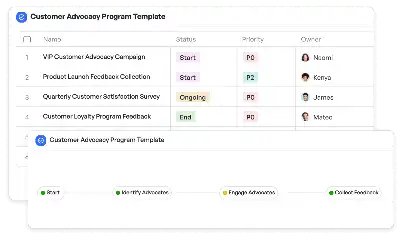VR Motion Sickness Testing Protocol
Achieve project success with the VR Motion Sickness Testing Protocol today!

What is VR Motion Sickness Testing Protocol?
The VR Motion Sickness Testing Protocol is a structured framework designed to evaluate and mitigate motion sickness experienced by users in virtual reality environments. Motion sickness, often referred to as VR sickness, is a common issue that arises due to the sensory mismatch between visual inputs and physical sensations. This protocol is essential for developers, researchers, and testers to ensure that VR applications provide a comfortable and immersive experience. By systematically assessing factors such as frame rates, latency, and user interaction, the protocol helps identify potential triggers of motion sickness. For instance, in a VR racing game, the protocol can be used to test how rapid movements and visual effects impact user comfort. This ensures that the final product is optimized for a wider audience, reducing the risk of discomfort and enhancing user satisfaction.
Try this template now
Who is this VR Motion Sickness Testing Protocol Template for?
This template is tailored for a diverse range of professionals and organizations involved in the VR industry. Game developers can use it to test and refine their VR games, ensuring a seamless experience for players. Researchers in the field of human-computer interaction can leverage the protocol to study the effects of VR on human physiology. Educational institutions utilizing VR for immersive learning can apply the protocol to ensure that students can engage with the content without discomfort. Additionally, healthcare professionals using VR for therapy sessions can use the protocol to evaluate and minimize motion sickness in patients. Typical roles that benefit from this template include VR developers, UX designers, researchers, educators, and healthcare practitioners.

Try this template now
Why use this VR Motion Sickness Testing Protocol?
The VR Motion Sickness Testing Protocol addresses specific challenges faced in VR environments. One major pain point is the unpredictability of motion sickness triggers, which can vary widely among users. This protocol provides a standardized approach to identify and mitigate these triggers, ensuring a more consistent user experience. For example, it helps developers fine-tune frame rates and reduce latency, which are critical factors in minimizing motion sickness. Another challenge is the lack of user feedback during the development phase. By incorporating structured testing phases, the protocol enables developers to gather valuable insights and make data-driven improvements. Furthermore, the protocol is instrumental in enhancing the accessibility of VR applications, making them suitable for a broader audience, including those who are prone to motion sickness. By addressing these pain points, the protocol not only improves user comfort but also boosts the credibility and marketability of VR products.

Try this template now
Get Started with the VR Motion Sickness Testing Protocol
Follow these simple steps to get started with Meegle templates:
1. Click 'Get this Free Template Now' to sign up for Meegle.
2. After signing up, you will be redirected to the VR Motion Sickness Testing Protocol. Click 'Use this Template' to create a version of this template in your workspace.
3. Customize the workflow and fields of the template to suit your specific needs.
4. Start using the template and experience the full potential of Meegle!
Try this template now
Free forever for teams up to 20!
The world’s #1 visualized project management tool
Powered by the next gen visual workflow engine




